Today's article collates a set of teas kindly provided by Eugene, the Strahlian force behind the Tea Urchin shop, whom I suspect may have more than a little Chinese DNA in his own ancestry. If you've not yet checked out his shop, I urge you to do so, for the aesthetic appeal as well as the tea. Given the appearance of most on-line tea businesses, Tea Urchin stands out. The first bite is taken with the eye, after all.
The cakes pictured above and below (the Guafengzhai and Luoshuidong) are both samples covered by this article. I've been impressed with those cakes that I have described so far (the Charen Bangwei, and a pair from Gaofachang). However, I alluded to the fact that some other cakes have impressed me less; I cannot dissemble - "honesty is the best policy". So, here we go. If you're the owner of Tea Urchin, you may wish to stop reading now.
It may not be obvious in the images below, due to the eternal battle between me and my camera's colour balancing functions, but it's unarguable when seen under daylight. The aroma (when dry) of each tends to be quiet and muted, in accordance with my prior assumptions for red leaves. Uh-oh.
Luoshuidong
However, before we dive into the characteristics from the soup, we must pause to make mention that all of these leaves, apart from their colour, are very pretty to gaze upon. The leaves are well-handled, they have a decent shine, and retain much of their original fur. The appearance of the leaves suggests that Eugene knows how to select good leaves.
Guafengzhai
Alas, the pinmingbei [tasting cup] tells the same story in each case, for the Guafengzhai, Luoshuidong, and Dingjiazhai. (I will come to the Laoman'e later, which is a different story.) Each of the three former cakes are from the same region, being Yiwu-area cakes, and are all autumnal.
Guafengzhai
I found each of the autumnal trio to exhibit the same character: the orange soup is constrained, limited, unexalted, unenduring in the throat, and tends towards the flavour of "hongcha". In every case, the quality of the leaves is clear: trying to make themselves heard from under the smothering blanket of hongcha that has robbed them of their charm, the leaves exude a cooling sensation, and have some vibrancy on the lips and tongue.
Luoshuidong
Each of these three orange autumnal teas disappointed me, because such limited teas have a very "low ceiling", that prevents me from enjoying them to a great degree. I put this to Eugene, feeling rather terrible for doing so. After all, this is a man's livelihood with which I am taking issue, and I wish for nothing but success for what seems to be such a labour of love.
Eugene took it all in his stride, and noted that the autumnal leaves tend to be much heavier in terms of water content that the premium spring leaves. This leads, he tells me, to his producers erring on the side of caution when it comes to the wok - they keep the leaves in the heat for as long as they dare, to remove as much water as possible, but they cannot push too hard lest they burn the leaves.
The result is that shaqing is not completely performed, and the leaves therefore continue their oxidation - much as hongcha, hence the characteristic that I had encountered.
Dingjiazhai
He noted that Gaofachang cakes managed to mitigate this effect to some degree by careful removal of red leaves from the blend after processing had been completed, which accounts for the substantially higher prices of the Gaofachang cakes compared with the Charen cakes. My notes have: Guafengzhai ($97/357g), Dingjiazhai ($65/357g), Luoshuidong ($43/357g) compared with the Gaofachang spring Mangzhi ($102/357g) and Gaofachang autumn Yibang ($85/357g).
The result, then, is a very large quantity of tea that is "capped", rather limited, and which has strong hongcha overtones. The colour of the Guafengzhai leaves below speaks volumes, for example.
Guafengzhai
I mentioned above that the Laoman'e cake was different, and indeed it is: the leaves are from summer, not autumn, and the price is a reasonable $41/357g. While there are a few red leaves, they are in the great minority, when compared with the majority of proper green leaves.
This soup is different, in that it has a green-brown shade; the second infusion develops a kuwei [good bitterness] far in advance of the trio of autumnal cakes, and has some "rustic honey" within its fairly limited scope. The body develops floral scents, and it dwells nicely in the throat. I wrote that "it is absent its heart", in that it seems empty in the centre of its body. However, it is a great step up from the previous teas, and I stick around at the tea-table for a long time to see how it develops.
Laoman'e
Making autumnal cakes seems fraught with difficulties, and I am not entirely clear why people continue to push ahead with making them. Eugene can pick excellent leaves, as evinced by the good underlying characteristics of the maocha in each of his productions, but the results for autumnal leaves are not excellent to my mind.
Who am I, a laowai, to say how a man should run his business? I share with you only my opinions, such as they are, for you to compare with your own conclusions. It is my hope and expectation that Tea Urchin will join the ranks of my favourite suppliers in the coming years, to give us more of those cakes that the excellent spring Bangwei demonstrate are possible. I understand that, since writing this article, some 2012 cakes have become available, which, most importantly, are spring cakes.
Running a tea business much be exceedingly difficult.
Edit: I accidentally published this article earlier, rather than queuing it for eventual publication today; in the short while that it was available, a comment was made which I reproduce here to avoid losing it:
Edit: I accidentally published this article earlier, rather than queuing it for eventual publication today; in the short while that it was available, a comment was made which I reproduce here to avoid losing it:
Dear Hobbes, I would like to point out that Yiwu is probably the toughest area to source tea. In the Yao area, on the eastern part of the mountain range, there are widespread problems with the manufacture. It is actually very hard to find a perfectly processed Gua Feng Zhai or Ding Jia Zhai tea. I have made it four times to those villages and I haven't managed to find decent mao cha yet, the tea has a very good Chaqi, but I always find something wrong in the taste. I hope it will get better in the future! All the best! William



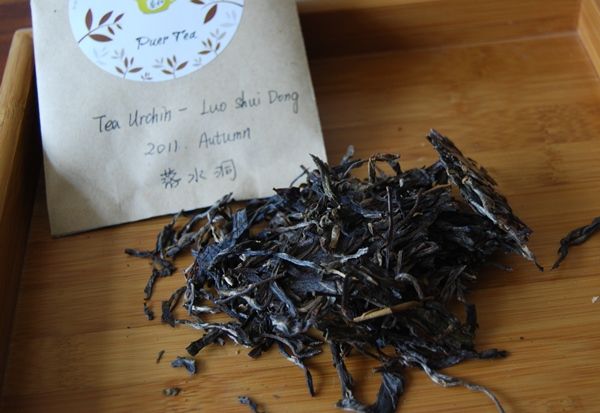
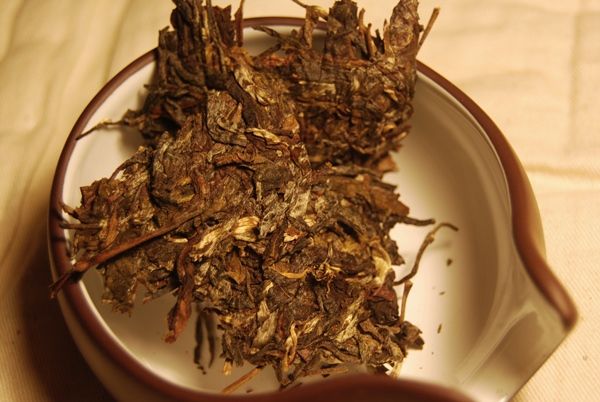
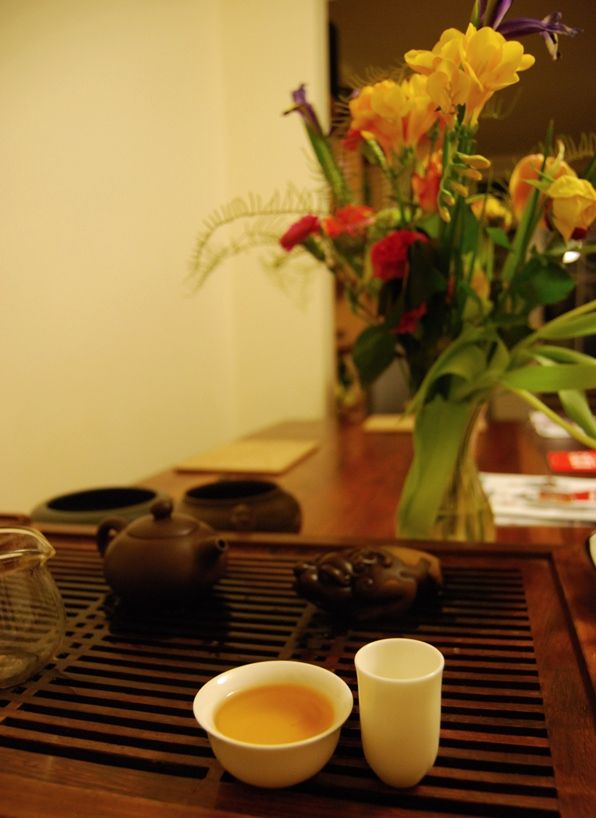
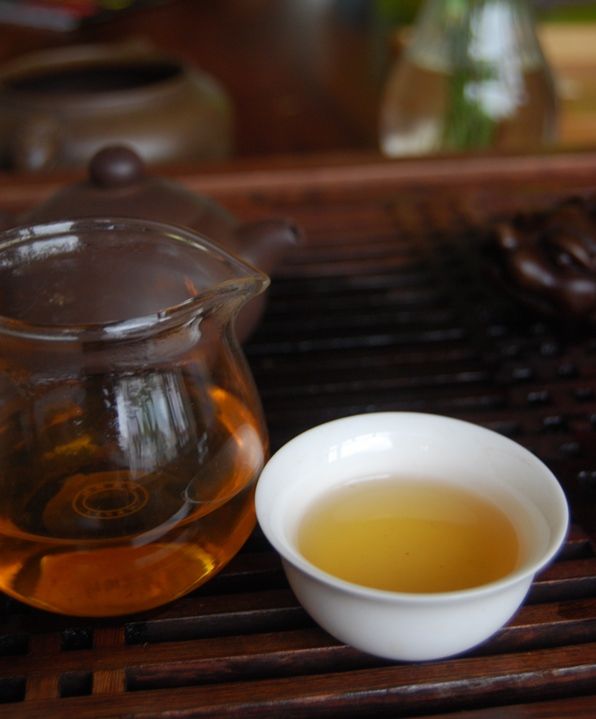
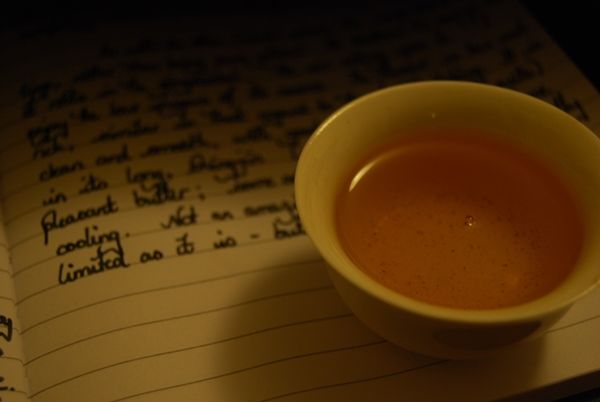

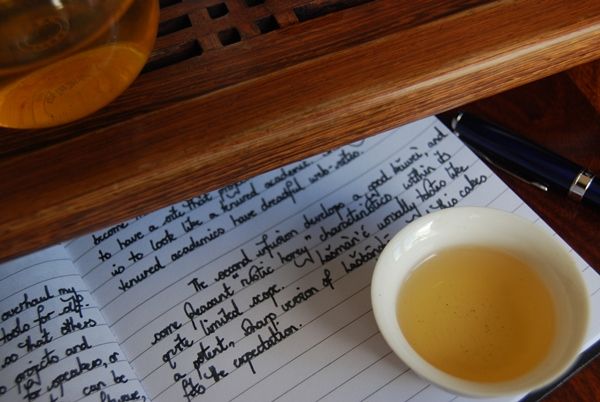
14 comments:
Hi Hobbes,
Hope all is good and well at your end.
A bit on my fav yiwu area, guafengzhai. These few years we've seen prices catching up to laobanzhang even. Getting good maocha in these area with great demand is all about timing, connections and money. There are also areas in guafengzhai itself which are superior than others.
Let me get you some 2012 spring when I get my hands on some, perhaps next month.
For now take care!
Greetings, Sir!
I hope that all is warm and comfortable in Hong Kong. Given your access to good tea, I wouldn't say no to your generous offer! I've been back to those Changtai-pressed private selections many times.
Toodlepip,
Hobbes
I don't really buy this. Up to 2006, it doesn't seem like there were that many issues with processing Yiwu, as opposed to any other region. There were more issues with non-plantation Bulang!
I think it's simple excess demand. Perhaps the demand makes facilities for processing more hard to come buy, as many people have to wait to get their leaves done.
--shah8
Shah8 - there's a reason for this, as numerous conversations with friends who frequent tea regions have alluded to - in 2006, they were often harvesting near the villages. These days, a 3 hour hike into the mountain for some maocha is almost routine. The added distance does all kinds of things to the leaves, if you're not careful about how you handle the recently harvested leaves.
Disclaimer: I am friends with Eugene.
Interesting review. I thought for awhile about whether or not I wanted to comment because, as you know, Eugene is one of my closest friends and I didn't want what I said to come across as disingenuous. That certainly will not be the case, as Eugene himself would admit that I am one of his toughest critics. Overall, I do agree with your assessment of the cakes you reviewed. For me, they are quite muted. This is the case with many Autumn cakes and is especially noticeable on single mountain cakes as they are limited in the flavor profile anyway. That may also be why Shah8 likes the pre-06 cakes as well because there was more blending done at that time in regards to area (villages) and seasons. Autumn teas may have had summer mixed in, and perhaps a bit of Spring as well if it didn't sell through. However, I don't find them to be red or even remotely hong-cha like. mine are bright yellow in the first couple steeps, but as I push them harder trying to get something out of them, they tend to go darker and the soup will turn darker if left in the cup for awhile. My spring cakes would behave the same, so I wonder if something happened to your samples. When you say red and hong-cha like, I think more along the lines of DaXueShan from Shuangjiang Mengku. That was definitely a cake that went red and was a result of processing like a lot of their other cakes.
That said, I don't think it has to do with limited processing facilities. Anyone who is on the mountain will tell you that there are less buyers on the mountain in Autumn than in the Spring. With more people buying in the Spring, you would assume if limited processing facilities were to blame, you would see the problems at that time as well. Likewise, if it was due to the hike further into the mountains, the Spring teas would follow suit with the Autumn teas. However, if you note, the teas you reviewed are all from different villages. The more obvious answer is the Autumn weather.
I, like you and most others, prefer Spring to Autumn cakes. That said, there are those that prefer Autumn cakes and it is good to carry those cakes (some people like to add water to their whiskey/bourbon, I prefer mine straight). Autumn tea is softer and the Qi is calm, and honestly if all the vendors stopped carrying Autumn tea, it is not as if the farmers would not process the raw leaves. The trees have to be picked regardless to keep them producing. in the end, it is more likely that some of the processed Autumn maocha would make it into your spring teas.
Obviously, it really needs to be a great Autumn cake for me to buy in quantities. Eugene is always very gracious (as well as a clever salesman) and sends me each of his cakes to "try" and then send back the ones I don't want. I normally will keep most the cakes just to see how they age, but some I will buy quantity and tong-up. I bought 3 tongs of his Autumn teas (between 2 different teas). Ironically, you have not reviewed any of them yet. I also bought a few of Scott's cakes as well as other vendors (I don't like to buy small samples as a session is dependent on so many things and a different day can produce different results). I think I only bought one of Scott's Autumn teas in quantity as well. I always like to have some good Autumn around because people that are new to pu'er tend to like them a bit more and they are not as expensive if you want to give away cakes.
Again, I agree with you that the Autumn teas you tried are a bit weak. I don't find them to be hong-cha like or red, just too soft for my linking. Like most Autumn pu'er from most other vendors. Nothing really new. Not sure if you have finished all your samples from Tea Urchin or not, but if you have the rest of the offerings from Autumn from Charen and his other producers that he sells, I think you find some others that are a bit more interesting.
-DP
Sorry for the removed comments. Couldn't stand looking at the format...
Oh, btw... yes his Spring teas are good this year... Some are outstanding...
-DP
Dear Shangers,
Thanks for the comments, they made for excellent reading. I tend to have the same problems in writing about Essence of Tea cakes, because I'm a bit biased towards the ventures of friends. That said, the cakes have been good from 2008-2011, and my praise has been justified up to 2011, I think. The proof of the pudding is in the tasting, after all.
I've previously written about a few other 2011 cakes from Tea Urchin, some of which I liked very much. Have a peek at the tasting notes page for the Tea Urchin list, and see if you agree with my assessment. I'd love to hear your thoughts.
The consensus from my correspondents was that they were very much looking forward to the 2012 cakes, having found the autumnal cakes a little on the overdone side. It's a difficult business, for sure. Eugene has often written on the difficulty of shaqing for autumnal leaves, in that it tends to be underperformed due to the water content: the farmers cook it as long as they dare, but it will invariably continue to oxidise to some degree, leading to "redness" and a subtle (or sometimes not-so-subtle) hint of hongcha.
Toodlepip,
Hobbes
Hey Hobbes,
Yes, I actually read your tasting notes on the others before I posted. I didn't see a review the teas that I bought in quantities in the notes. For instance, the Charen Mangzhi. Of his Autumn teas, I found that one to be the strongest flavor overall. I did like the GSZ as well though. Also, we tried the maocha of the Xikong from Xinshenglihao at my home before he bought it. I enjoyed that tea as well, but I have enough Xikong and didn't buy it. I did buy one of his other offerings from Xinshenglihao though.
In regards to EOT's teas. I have only had a few samples in tea swaps from other tea friends. I think I have had 5 samples. 2 from one person and 3 from another. Out of the 5 samples, there was only one that I would have bought. However, the 3 samples that came from one person all had a funky storage taste to them (though I could detect the separate areas), but I doubt that it came like that from Nada. Of the other 2 samples, one was great and the other was good but not as good as some other teas I have from other vendors of the same mountain/vintage. I have no doubt that EOT has good tea, I have just avoided them because of the postage and being in China, I have access to a lot of teas.
I suppose when you say overcooked/overdone, I was referring to being burnt. However, I think I understand that you mean spending too much time in the frying process, without completely drying. For me, this is where some time in the "kaofang" could improve the tea. Less time in the "shaqing", so the heat doesn't cause changes, but spend some time drying in very low temp room. I think this would be similar to what would be done in the villages with storing the maocha in the rafters of the house. Some traditionalists would frown upon the kaofang, but I think during humid/wet Autumn period, the modern kaofang may mimic some of the process that would have been done by the farmers to prevent the humidity from affecting their maocha before they sold through.
I know some manufacturers do the kaofang after pressing and I think this may be an attempt to remove some of the moisture and imitate what the farmers would have done on a smaller scale.
Dear Shangers,
I am always amazed at the ability of shengpu to acquire the strangest of storage notes, funky or otherwise. :)
The cakes I have from Nada in 2008-2011 have been aging well, although, unsurprisingly, they are in the "dry" genre - clean, slow-to-age, but remaining nice and potent.
I'm looking forward to trying Eugene's cakes from 2012 and must remember to get around to buying some samples. It seems impossible to find the time to do such things - I have to get YS samples, too, as well as Chawangshop, Puerh.sk, Bannacha, etc., etc... With a little boy and a hectic job, such concerns take a back seat. :)
Toodlepip,
Hobbes
Toodlepip,
Hobbes
Hey Hobbes,
Storage really is important. The 3 teas from EOT that I referred to all had a floral/chemical flavor to them. Almost like it was stored in a clothes closet and soaked up the detergent smells. I have had one Jingmai tea like that from a friend of a friend. It was really disappointing to me that they had the storage issue because I was looking forward to them. I won't mention which they were, as I think it was an isolated issue with storage, and I never want to judge from one small sample.
I will say that the one excellent tea that I had was the Manmai. It was actually the first tea I had out of the 2 sets of samples. Light, fresh, fragrant. I was pretty surprised as I generally like heavier teas, but there was something special about it. Aftwerwards, I was prepared to be blown away by the other samples. Alas, it was not to be. Would be nice if I could convince Nada to sell me some tea before he shipped all the way to the UK.
I know what you are saying about having spare time. We just had our first, a little boy, back in January. Both my wife's family and mine are far away, so the majority of our time goes to parenting. I have about 30kg of maocha upstairs that I need to pick through and press. But honestly, any free time between work and the baby is a luxury and spending time pressing maocha gets put off for other priorities.
-DP
Many congratulations on your new addition to the family! Much changes, little remains the same - in a lovely way, as you'll no doubt have concluded. Treasure your sleep when you can get it! I remember a few weeks of sleeping involuntarily after lunch...
Toodlepip,
Hobbes
Hobbes,
Taste, feeling, and quality like so many things is completely subjective, Luckily I have only tried the Tea Urchin's spring teas. To be completely honest with you, Eugene and Belle's teas have more heart, and complex flavor than any other tea that I have ever tried. (and believe me, I have raided the depths of Yunnan sourcing, San Francisco's China town, and ebay)If you have not tried any of their 2012s yet i think you are missing out of some truly powerful and unique teas, some of which have changed the way that i drink tea. For some reason their tea causes me to slow down, and reflect, remember the sacred in my daily meditation and tea practice.
For instance The zhangjiawan they offer is in my opinion one of the most pleasing and approachable teas i think i have ever experienced. Along with all of the tea i have tried, spring 2012, i am blown away, at the craftsmanship...
I guess i only share this because i would love to hear you opinion, and ask for a revisit of these truly sacred teas that a wonderful couple are producing, with the the consumer, and the producer of the mao cha in mind.
Give them another go if you have time, they may even change your life!
Best wishes, and may your heart ever grow!
Theodore
Autumn TeaUrchin revisited: Well, guess it is time for me to eat crow. It's been awhile since I have had any time to check out the tea blogs. You weren't kidding when you said to treasure my sleep. The baby wasn't concerned about me having time for tea or sleep or anything else for that matter.
Anyway, just returned from Yunnan a couple weeks ago. Before I left, I decided to go through some of my younger teas and help narrow down villages I wanted to see this year. After some gentle prodding from Eugene, I tried his LuoShuiDong again. Wow, what a change. Viscous, sweet, slight bitterness, and 10+ infusions.
Bolstered by the experience, I tried the DingJiaZhai again... That cake didn't leave our table for a week. In between other tastings, I kept coming back to that tea. Like the LuoShuiDong, the soup had thickened, it was sweet, and just the right amount of bite to keep it meaty. Huigan was strong, and again I was able to brew it longer than other Autumn teas.
Due to the positive experiences, I planned on using some LuoShuiDong in my Yiwu blend this year. I have never been a fan of LuoShuiDong, but I got to thinking it may pick up when other Yiwu areas start to fade. Alas, due to a scheduling mistake, we cut our Yiwu area stay a day short and went to Laos a day early. Traveling with the kid and climbing steep tea mountains with him meant we were pretty worn out and decided to put it off.
Regardless,I will be going back through some cakes that had been sidelined for some time. Kilos of untouched LuoShuiDong may have been given new life. I felt like I needed to write this post for those that may have these cakes and have been waiting for them to change. Definitely recommend giving them another run.
I will be having mine with a big serving of humble pie. Also, in the future, I will give them a few weeks to settle after arriving. Being in Shanghai, I pick the cakes up as soon as they arrive (which is directly after pressing). I know from the experience pressing my own cakes that is not the way to taste a young tea. Definitely need to extend the same latitude to other's tea.
Anyway, try them again if you still have samples or cakes. They surprised me. For a guy that loves Spring teas, those two Autumn teas occupied a lot of precious tea time and counts for something. I have found that good tea seems to improve with time and TeaUrchin teas seem to exhibit that trait more than others.
-DP
Dear DP,
Thanks for the update - what a fascinating change. Since writing this article, I haven't tried any of Eugene's teas, and perhaps it's time I did so; I keep seeing the name of a "Miles" cake (his son?) cropping up from time to time.
As far as Luoshuidong, whenever I hear teafolk refer to the region, it is always with a sense of disdain! Luoshuidong seems to be the Merlot of pu'ercha, as far as reputation goes. I'm sure that, as with Merlot, this is not entirely justified, and that good examples exist, but they say that every stereotype has at least some grounding in truth...
Perhaps when I get more time, I'll visit Eugene's shop to see what's new. Thanks again for the suggestion!
Toodlepip,
Hobbes
Post a Comment